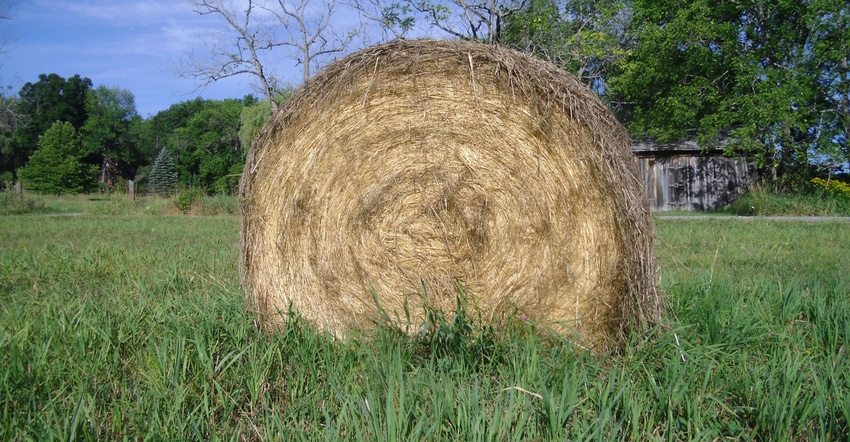August 18, 2020

Hay supplies in the Northeast are going to be in tight supply thanks to the slow start in spring and the hot, dry weather this summer in lots of places.
Temperatures throughout much of the region dived into the lower 20s (degree F) in early May and that set the stage for yet another climate-induced yield-reducing hay season.
If we go back and look at the Cumulative Growing Degree Days (Base 50) Map generated by Cornell University’s Climate Smart Farming, it shows that after March 23, growing degree days in our area fell behind the 15-year average. By March 30, GDD accumulation had fallen behind both the 15- and 30-year averages.
This calculator tracks the cumulative number of days the air temperature gets above (or below) the threshold temperature of 45 degrees, which is the temperature threshold for most cool-season crops such as orchardgrass and alfalfa to get out of the ground and grow.
Normally, we anticipate a warmup in late April and early May, but the colder-than-normal weather kept early season hay grasses dormant. Early spring and fall are when cool-season grasses such as orchard, timothy and native species put on biomass. Cool-season grasses are called C3 plants because they fix carbon dioxide more efficiently in cooler environments by fixing CO2 via the enzyme ribulose bisphosphate carboxylase (RUBPcase) in the chloroplasts, which need to be actively photosynthesizing.
To read more, visit Oregon State University’s forages website.
Unfortunately, soil temperatures in early May were slow to get above 40 to 45 degrees for these cool-season grasses to come out of dormancy, and what little growth was attained was sheared off on the night of May 8 by a killing frost that affected much of the Northeast.
In fact, it took until July 11 to catch up to the 15-year average of about 1,000 GDDs.
Now remember, cool-season grasses are accumulating height and nutrients when temperatures are between 65 and 75 degrees. But C3 grasses also become less efficient as daily temperatures go up. It got kind of hot around here in July, didn’t it? In fact, by July 20 the season-to-date GDDs surpassed the 15-year average of 1,190, and it’s been hot ever since.
The good news is that there is still time to recoup some of that lost biomass from earlier this season, but we need moisture to get there and some cooler weather.
Plant a warm-season grass. While it is still hot and humid, and if you live in an area where summers are longer, jump on it and plant a C4 grass, such as sorghum, Sudan, sorghum-Sudan or Japanese millet. Warm-season grasses reduce carbon dioxide by first converting carbon dioxide to oxaloacetate, a 4-carbon acid, and they do it best when the sun is high in July and August.
Just remember that herbicide uptake on heat-stressed, moisture-deprived sods do not work well. If you can plant, consider plowing up and smoothing out those rutted up, rough and worn out pastures or hayfields.
Jumpstart dormant grasses. You can also jumpstart your cool-season grasses as we head into cooler fall weather with a shot of nitrogen to push biomass, though it’s best to wait until you see some lawn recovery before you try to push burnt-out grass with a nitrogen-based fertilizer.
Also, be aware of nitrate toxicity, how it occurs, and the risks of it happening relative to fertilizer rate, timing and precipitation. If the crop takes up the fertilizer and a frost occurs shortly afterward, the forage can have nitrates too high for safe consumption.
Plant cool-season crops. If you have the moisture and the bare ground, try to get ahold of some seed and plant rye, wheat or triticale. These cool-season grasses will put on biomass until killing frost.
Check out the cover crop biomass research trial data at your nearest USDA-NRCS Plant Materials Center for variety suggestion and planting dates.
Bravo is a certified crop adviser for Meadow Lake Crop Consulting Services in Lawrenceville, Pa.
You May Also Like




